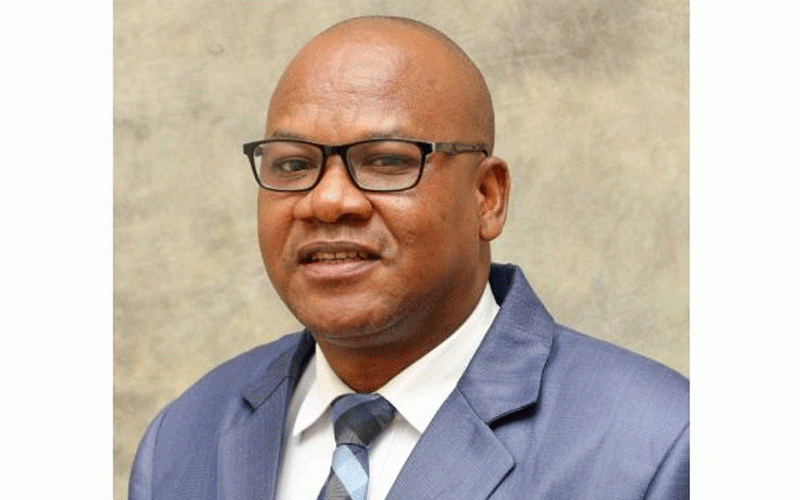
A teacher who had dedicated 18 years of service to the nation made headlines in 2021 when he received $14 600 (U$172) in pension payments.
Once more, the previous year, another educationist who had served for 23 years, set the social media space ablaze after receiving $28 461 (US$123) as her pension benefits.
These two incidents, while not unique, highlight the pervasive difficulties that today's working population will face upon retirement. Zimbabwean pensioners have been victims of continuous economic decay which has seen deterioration in the quality of life for pensioners in the face of the harsh economic climate, eroding their monthly payouts despite years of service and contributions.
The pre-2009 and post-2019 inflation episodes have generally resulted in significant loss of value for pensioners as inflation has a redistributive effect of transferring wealth from savers to borrowers.
With pensioners being the major savers, they were not spared from the effects of macro-economic instability and to date people are earning as little as $80 000 per month.
There have been concerns on whether pensions are still necessary in Zimbabwe as the contributors do not benefit at all at the end of the day, with experts calling for a relook into the pensions model.
This is coming at a time the Insurance and Pensions Commission (Ipec) is seized with compensation of the 2009 pensioners in line with the Justice Smith Commission’s recommendations.
But, Sibongile Zororai is not hopeful that the process will benefit her.
- UK based Zimbabwean divorces wife of 33 years over conjugal rights
- New perspectives: Money laundering red flags in insurance sector
- 3 000 non-resident pensioners owed US$1.5 million, says Ipec
- Removing barriers to women’s financial inclusion
Keep Reading
"I worked for the government for years and my retirement coincided with the hyperinflationary era of 2009,” Zororai told Standardbusiness.
“I didnt get anything. It’s over two decades now and nothing has come through.
“I am not sure if we are going to get the same value if they pay us now but it’s better than not having anything at all. During the days of our fathers, it was prestigious to be a pensioner but today it is a death sentence.
“If it was not for my kids, I would have been long gone.”
Independent actuary David Mureriwa recently said it was important to ensure that the compensation process gives real benefits to pensioners.
“If not, then this will be just an exercise which will not bring finality to our problems,” Mureriwa said.
“We are bound to have a challenge where this conversation will be paid in perpetuity.
“We need to ensure that we need to have that.
“If you read the Justice Smith report, it gave the impression that the power of the laws appears to be macro in nature and they expected the government, the state to compensate more than the industry, so to speak.”
But what are the real issues behind the suffering of the pensioners in Zimbabwe?
Ipec director pensions and life assurance supervision Cutherbert Munjoma said inadequacy of contributions is one of the sticking issues.
“Since pension savings are a form of deferred salary, most pension scheme members are saving very little amounts, which will impact adversely on retirement savings,” Munjoma told Standardbusiness in an interview.
“There is, therefore, a need for employers and labour organisations to ensure adequacy of contributions to improve welfare of pensioners.
“The need to address the problem of pension contribution arrears and partial access of pension savings on job switching can also not be over-emphasised.
He added: “Then there are administrative inefficiencies of pension funds – the industry has 976 private occupational pension funds with a membership of under one million people.
“Some of the funds are too small to enjoy economies of scale in administration and sharing of costs.
“Part of our supervisory focus going forward is to facilitate consolidation of these small funds into umbrella funds to enjoy economies of scale and reduce costs, as well as improve investment outcomes.”
Munjoma added that the pensions industry was invested mainly in two asset classes namely, investment property and listed equities.
He said the property market was faced with some challenges, which require concerted efforts to improve return for pension funds.
These include low occupancy levels, particularly in the central business district due to shortage of parking space and pollution, thus calling for intervention from city fathers, policymakers in government and repurposing,” he said.
“Thus, there is a need to create new asset classes and unleash the potential of the investments.
“Pension funds have also raised concern about some tenants who are defaulting on paying rentals and taking advantage of the law that does not allow eviction without a court order, which is a process that can be protracted.
“The equities market, that is, the Zimbabwe Stock Exchange, has also experienced a bearish trend over the last few months, which has had a negative impact on pension funds’ assets whose values have significantly gone down.”
Munjoma said the pre-2009 and post-2019 inflation episodes have generally resulted in significant loss of value for pensioners as inflation has a redistributive effect of transferring wealth from savers to borrowers.
“With pensioners being the major savers, they were not spared from the effects of macro-economic instability,” he said.
“Thus, it calls for macroeconomic stability to promote long-term savings and restoration of confidence in insurance and pensions.”
The National Social Security Authority (NSSA) deputy director, marketing and public relations Tendai Mutseyekwa said there were significant challenges that were hindering efforts to enhance the welfare of pensioners, which include the shrinking contributor base relative to the growing number of pensioners.
"The sticking point is the payment of adequate benefits against the backdrop of resurgent inflation, a shrinking contribution base and low contribution levels,” he said.
“The NSSA Pension and Other Benefits Scheme have a relatively low contribution rate of 9% of earnings (4,5% by employer and 4,5% by employee), which is subject to an insurable earning ceiling,” he said.
“In other jurisdictions, contribution rates are higher, up to 20%, and this is based on one’s gross earnings.
“Additionally, the depressed investment returns have also had an impact. Despite this, NSSA’s benefits generally compare favourably against its peers in the region.”
While there has been a gradual increase in industry capacity utilisation, Mutseyekwa said it remains relatively low, estimated at 56,25% in 2022.
This, in turn, affected the number of companies making contributions to NSSA. Additionally, a substantial portion of the workforce operates in the informal economy and does not contribute to NSSA, which covers only around 35% of the labour force,” he said.
“Furthermore, NSSA faces the burden of over 1,8 million individuals who used to contribute but are no longer doing so, putting a strain on the scheme's ability to pay benefits.”
Faced with these challenges, Mutseyekwa said the authority has been making frantic efforts to preserve value for pensioners.
“However, NSSA is invariably considered the main pension fund. To live up to this ascribed status, there is a need for a redesign of the scheme to ensure that contributions are commensurate with the pension levels anticipated by members,” he said.
“Along with this, there is a need to improve investments to buttress benefits."











